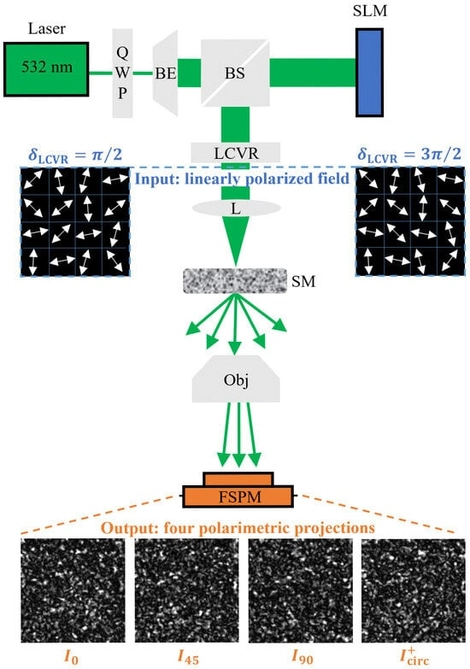- Article
Single-Path Spatial Polarization Modulation for Vector Transmission Matrix Measurement and Polarization Control in Scattering Media
- Edvard Grigoryan,
- Aram Sargsyan and
- Tatevik Sarukhanyan
- + 1 author
Controlling light’s polarization through disordered media is crucial for advanced optical applications but remains challenging due to scattering and depolarization. Most existing approaches either require interferometric or multi-path measurements, or they recover only part of the polarization response. We present a comprehensive approach for spatially resolved polarization control by accurately retrieving the vector transmission matrix (VTM) of a scattering system from intensity-only, full-Stokes polarimetric measurements. Using a simple single-path setup comprising a liquid-crystal spatial light modulator (SLM) with a tunable retarder after it, we achieve spatial polarization modulation at the input, thereby enabling probing of the medium’s polarization–scattering characteristics. The VTM is retrieved with an adapted Gerchberg–Saxton procedure that enforces not only the measured output amplitudes but also the relative phase between the two orthogonal output polarization components obtained from the Stokes parameters. We show that a single retarder setting results in inter-block correlations in the retrieved VTM due to input coupling, while two linearly independent retarder settings decouple the intrinsic blocks and recover the full VTM. In our experiment, for a set of input–output spatial modes, the VTM is retrieved with about accuracy, enabling polarization-resolved focusing with up to enhancement for horizontal, vertical, arbitrary linear, and circular states. This work offers a compact framework for active polarization shaping and for polarimetric characterization of complex media, advancing our understanding of vectorial light–matter interactions.
20 November 2025





